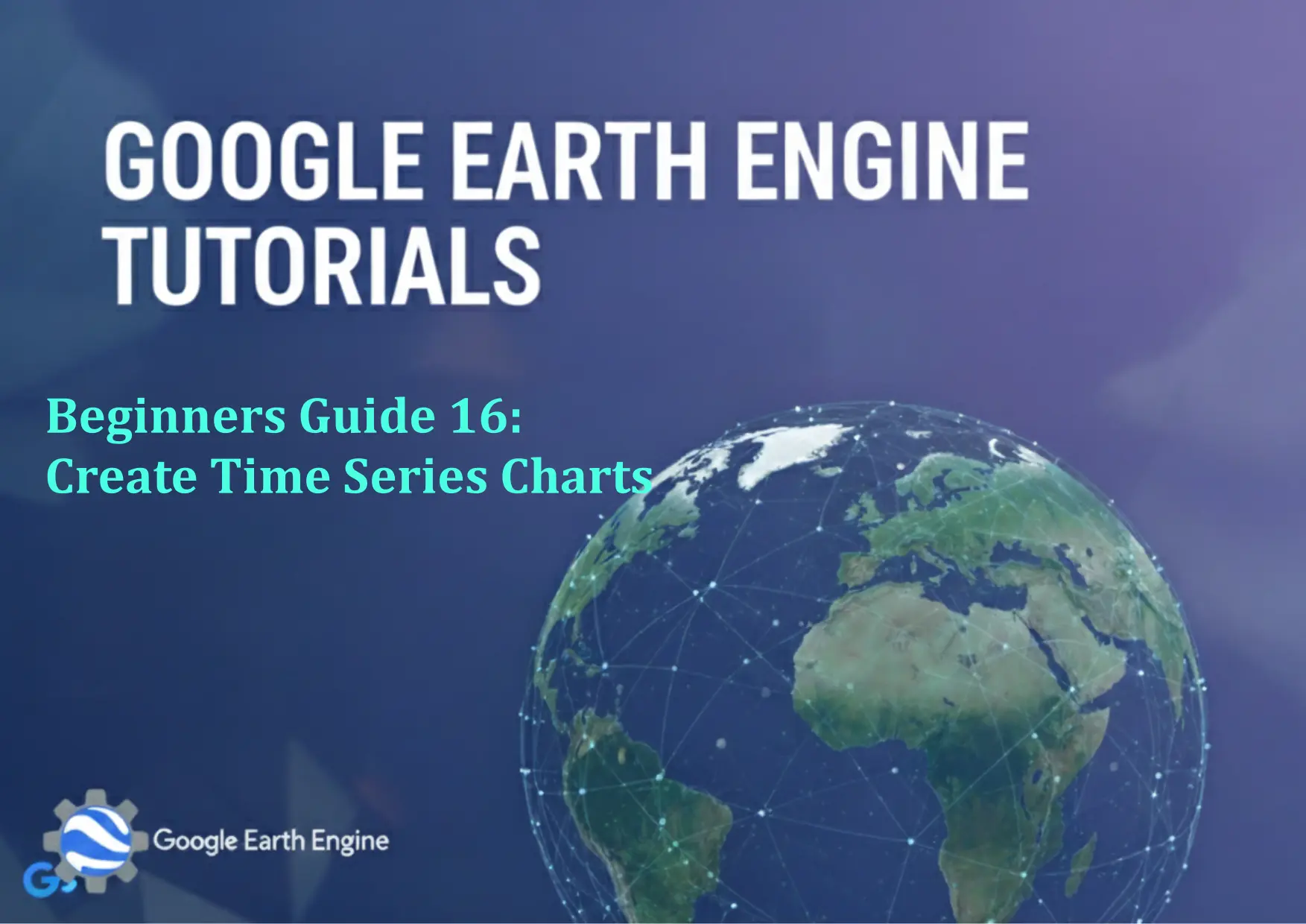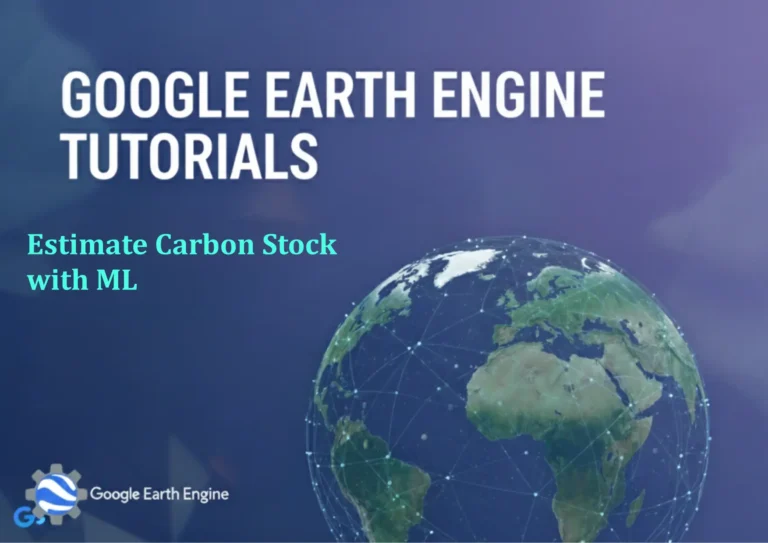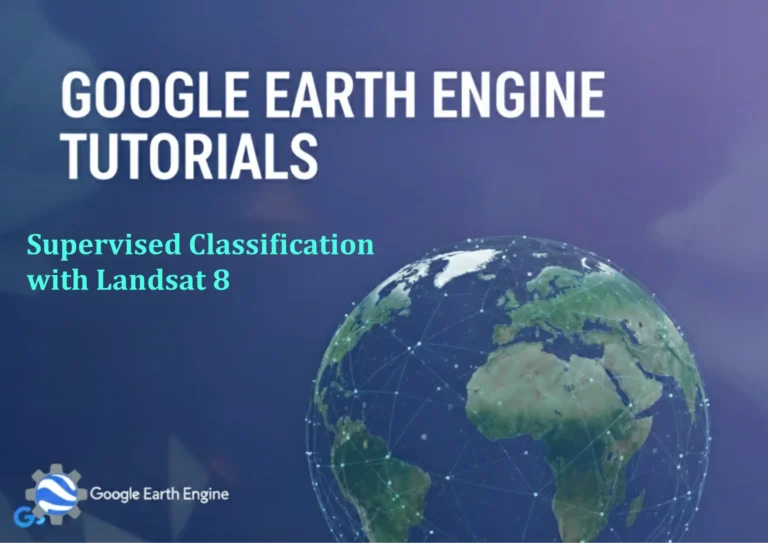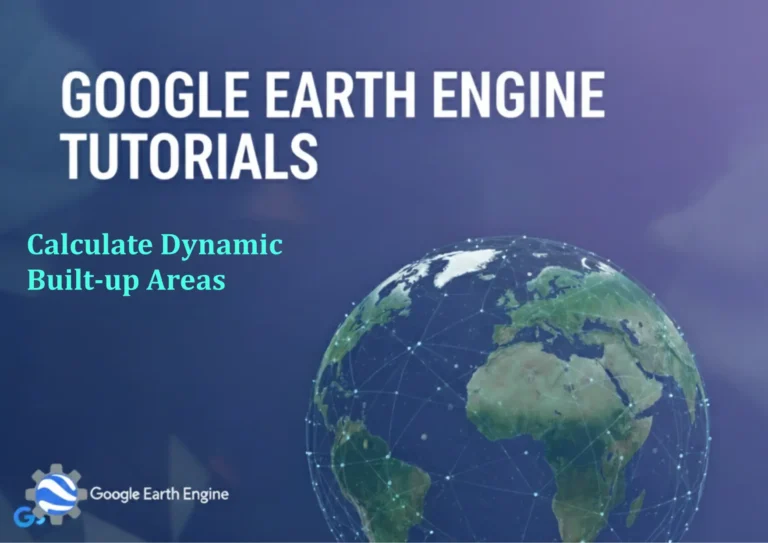Google Earth Engine Tutorial: Beginners Guide 16 Create Time Series Charts
Credit: Youtube Channel “Terra Spatial, Tutorial on generating time series charts to visualize temporal changes in satellite data and indices.”
You can see all the tutorials from here: Techgeo Academy.
Google Earth Engine Tutorial: Beginners Guide 16 – Create Time Series Charts using Google Earth Engine
Creating time series charts in Google Earth Engine (GEE) allows you to visualize changes in geospatial data over time. This tutorial will guide you through the process of generating a time series chart using Landsat imagery as an example. Follow these steps to analyze and plot data for a specific region and time period.
1. Load and Filter the Image Collection
Start by loading a dataset, such as Landsat 8 Collection 2 Tier 1 surface reflectance data. Filter it by your area of interest and time range:
var dataset = ee.ImageCollection("LANDSAT/LC08/C02/T1_L2")
.filterDate('2015-01-01', '2023-12-31')
.filter(ee.Filter.eq('WRS_PATH', 25))
.filter(ee.Filter.eq('WRS_ROW', 10));2. Define the Region of Interest
Create a geometry object for the region you want to analyze. Replace the coordinates with your desired area:
var region = ee.Geometry.Rectangle([-122.5, 37.5, -122.0, 38.0]);3. Calculate the Average Value per Image
Use a function to calculate the average value of a specific band, such as NDVI, for each image:
function calculateAverage(image) {
var ndvi = image.select('SRB4').divide(image.select('SRB5')).rename('NDVI');
var avg = ndvi.reduceRegion(ee.Reducer.mean(), region).get('NDVI');
return image.set('NDVI_avg', avg);
}4. Generate a List of Date and Value Pairs
Map the function over the image collection to extract the average values and dates:
var timeSeries = dataset.map(calculateAverage).map(function(image) {
return ee.List([image.date().format('YYYY-MM-DD'), image.get('NDVI_avg')]);
});Flatten the list to create a structured array of date-value pairs:
var values = timeSeries.reduce(ee.Reducer.toList(), 1).get(0);5. Create the Time Series Chart
Use the charting tools in GEE to generate a time series plot. Customize the chart’s title, axis labels, and other parameters:
var chart = ee.Chart.array.values(values, 0, 1)
.setOptions({
title: 'NDVI Time Series',
hAxis: {title: 'Date'},
vAxis: {title: 'Average NDVI Value'},
chartArea: {width: '80%', height: '70%'}
});
print(chart);The chart will appear in the console. To download it as an image, use chart.getDownloadURL() in the GEE Code Editor.
6. Customize and Visualize
You can customize the chart by changing the band, region, or date range. Consider using different datasets or metrics for other applications, such as land surface temperature or precipitation trends.
7. Export the Chart
To export the chart as a file, use the Export.image.toDrive function. Replace chart with your chart object and adjust parameters:
Export.image.toDrive({
image: chart,
description: 'NDVI_Time_Series',
fileNamePrefix: 'ndvi_chart',
scale: 30,
region: region
});FAQ
How do I change the chart type?
Use different charting options, such as ee.Chart.line for line charts or ee.Chart.bar for bar charts. Modify the setOptions parameters accordingly.
What if the chart doesn’t display correctly?
Ensure your region and dataset are valid. Check the console for errors, and verify that the image collection contains data within your specified date range.
Can I use a different dataset for time series analysis?
Yes. Replace the dataset ID in ee.ImageCollection() with your preferred source, such as MODIS or Sentinel-2, and adjust the band selection.
How do I add more data points to the chart?
Include additional images in the dataset by adjusting filterDate or filter() parameters. Use map() to process and add more metrics.
Can I plot multiple metrics on the same chart?
Yes. Use ee.Chart.array.values() with multiple bands or combine data using merge or zip functions before plotting.





